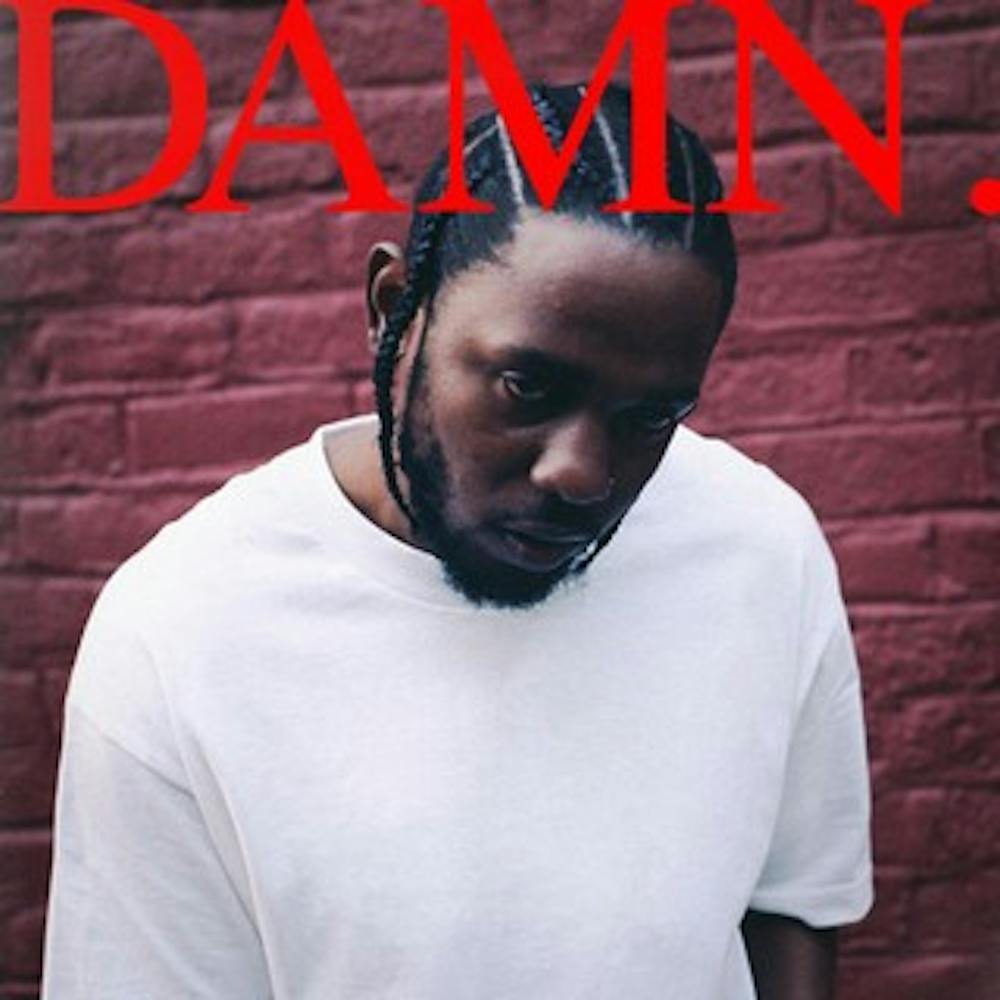Kendrick Lamar Duckworth is without a doubt the the most polarizing rapper of his generation. From the release of his 2011 debut “Section.80,” the Compton-born rapper has released a stream of albums that have not only all been heralded as modern classics, but have also been increasingly larger in scope.
His second album, 2012’s “good kid, m.A.A.d city,” delivered a brutal and honest look into the experience and effects of growing up in the impoverished neighborhood of Compton. Lamar returned on an even larger scale in 2015 with “To Pimp a Butterfly,” an address on inter- and intra-racial issues, systemization and hatred that has lead many to speculate whether Lamar could ever top a message so powerful.
Consequently, Lamar’s Good Friday release “DAMN.” does just that. In a series of events that may be unfolding Lamar addresses one of the bases of human existence — the wickedness and evil of man and the struggle to define it — an idea that is timeless and has been touched on by countess philosophers and theologians alike. From the beginning of the album, listeners are introduced to the idea of human duality. The first track, “BLOOD.,” carries a stanza heard and throughout the album that serves as the album’s central idea, “Is it wickedness? / Is it weakness?”
This idea of wickedness versus weakness is displayed in variously brilliant ways. Lamar expertly manages to address his circumstances while seamlessly tying them into larger ideas of human existence. In the opening track Lamar is killed by an old woman who appears to be blind and helpless, conveying the idea that what we perceive as evil is never as clear as it seems. The next several songs feature Lamar addressing the evil directly around him. The banging track “DNA.” and much more subdued “YAH.” find Lamar viciously responding to those — particularly news reporters — who have perceived his pride in his race as negative rather than something that should be celebrated. In the following tracks — “ELEMENT.” and “FEEL.” — Lamar discusses the demons surrounding his life as his fame grew.
These first few tracks demonstrate Lamar’s contemplation over his life troubles. Are they due to wickedness around him or weaknesses within himself? Tracks with alternating ideas include “PRIDE.” and “HUMBLE.,” both discussing the source of Lamar’s pride in his skills as a rapper.
Lamar’s internal battle continues through the rest of the album until the final track “DUCKWORTH.” In this final song we are told the story of how Lamar’s father was nearly killed by his label executive many years before Lamar’s fame.
At the end of this song, the album quickly reverses to the beginning of the first song, “BLOOD.,” in which Lamar is killed by the blind woman. These moments in the final track summarize what Lamar may consider his greatest demon — his own frailty and impermanence. For someone heralded has the voice of his generation, Lamar realizes his life could still end in an instant. This displays the idea that no matter the source — from wickedness or from weakness — evil is intrinsic to the world and an inescapable facet of our existence.
Lamar’s “DAMN.” displays a powerful message of wickedness and evil as a basic aspect of human nature. But as he has done in the past, Lamar delivers a project that excels in tying large ideas into specific circumstances surrounding not only him, but the modern context of society. Someone of Lamar’s stature is often elevated to god-like status by media and fans. Lamar recognizes the relevance of this position and utilizes “DAMN.” to not only speak on the concept of evil from a higher viewpoint, but also to display his humanity and mortality by revealing the evils and weaknesses within his own life. It’s this honesty and harshness that drives “DAMN.” the most, creating one of the greatest releases of the year.







